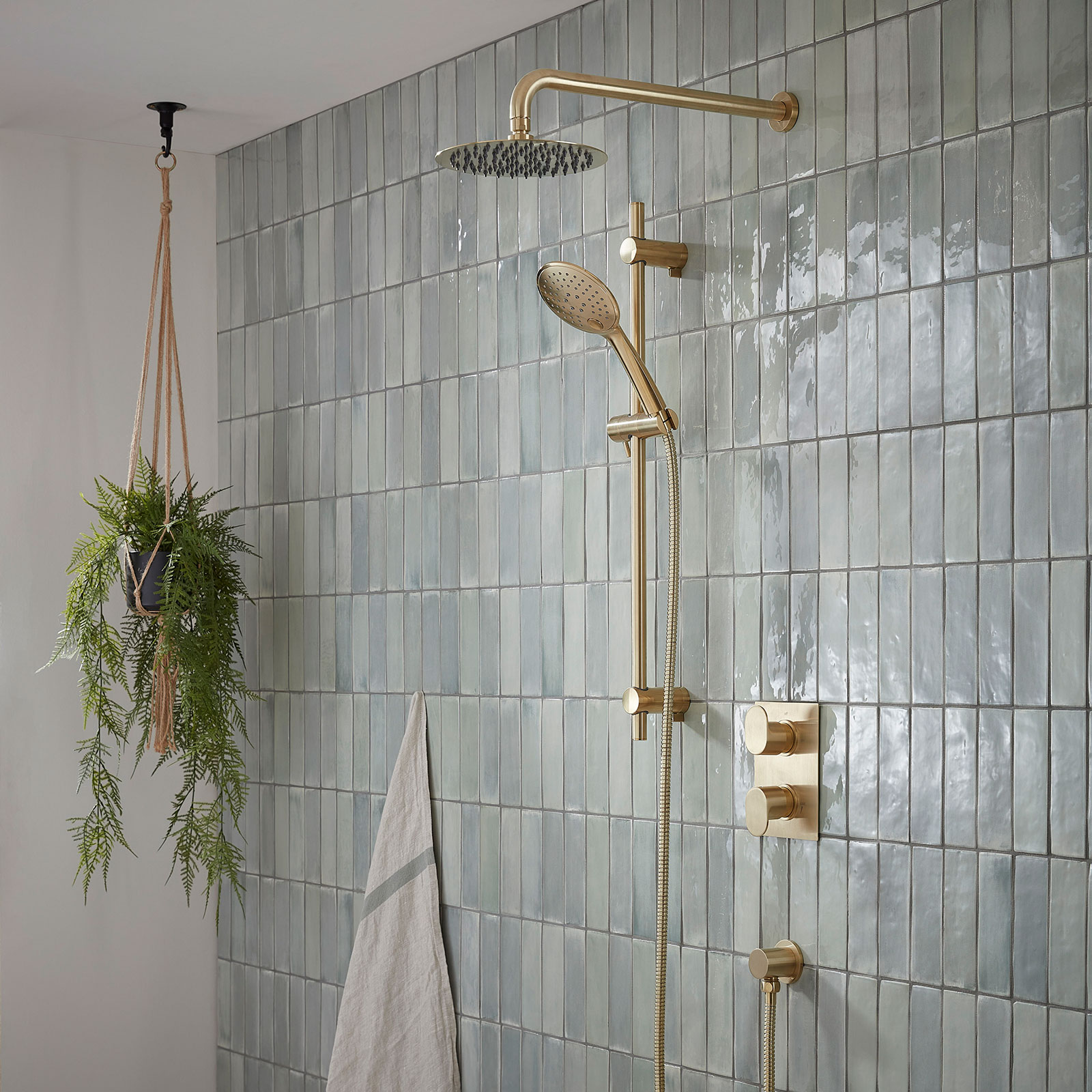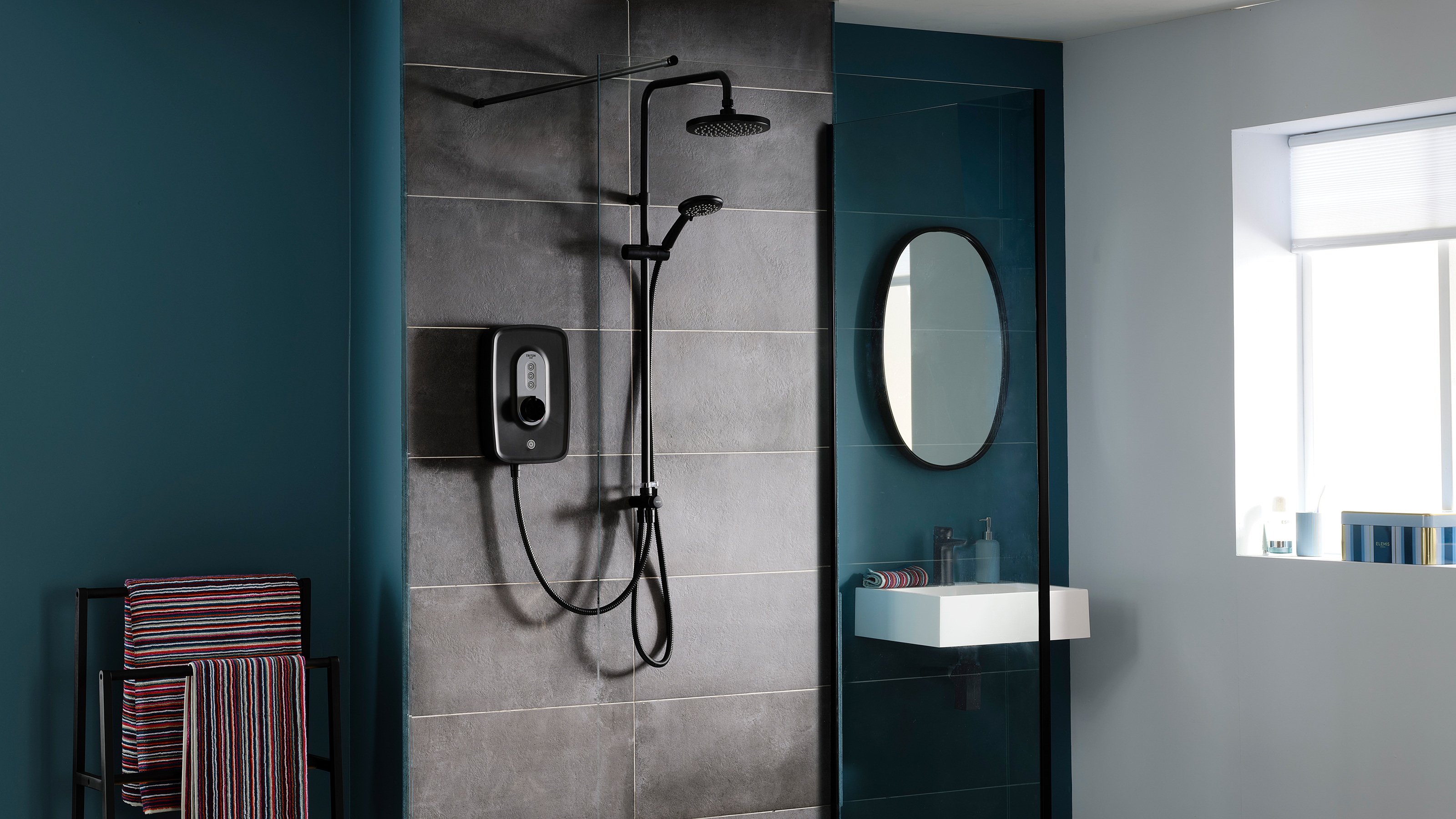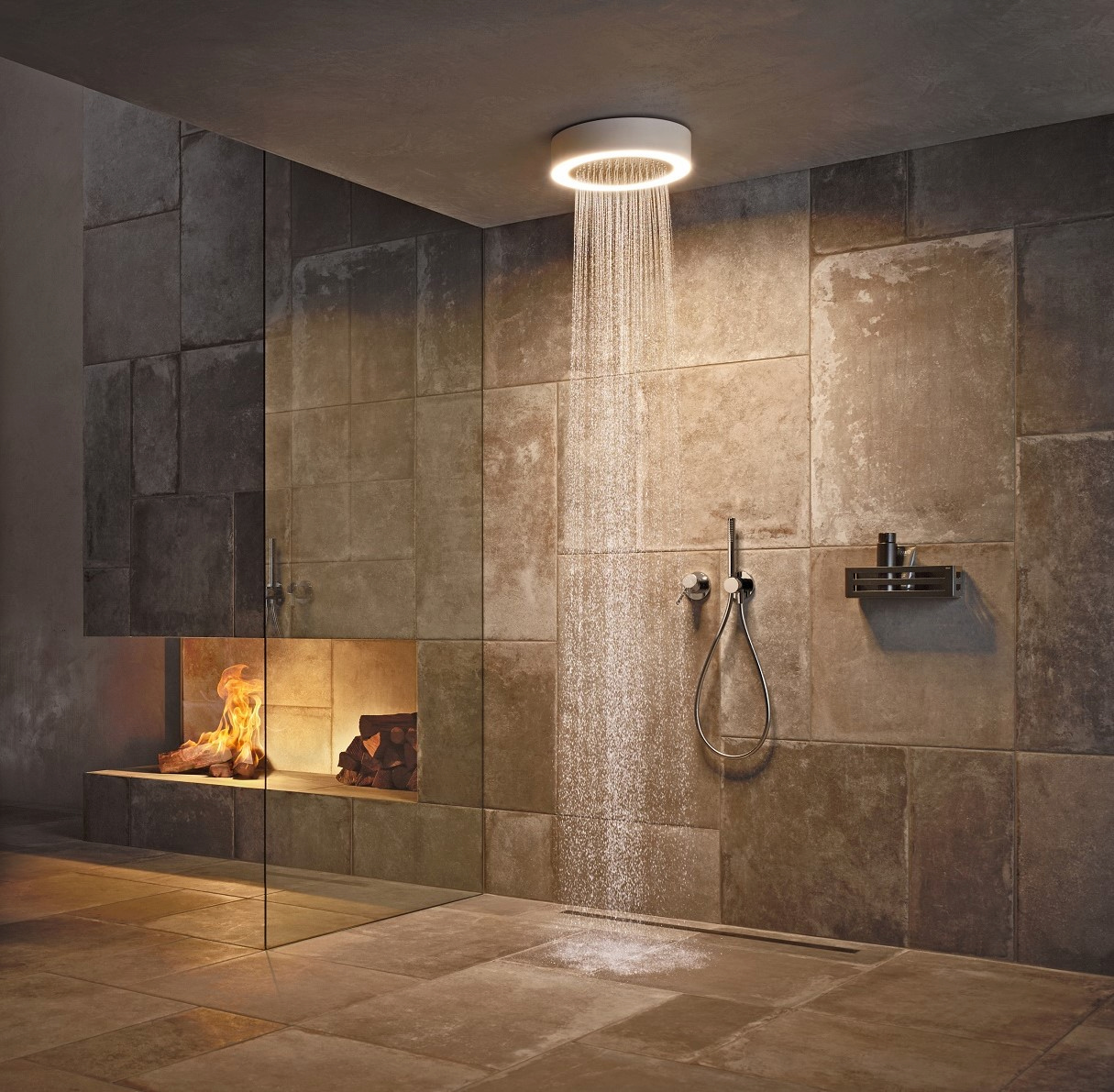Expert tips for increasing water pressure in your shower
Don't let lacklustre showers ruin your morning routine. Learn how to identify the causes of low water pressure in a shower and discover 5 simple steps to combat the issue.

If you're standing under a dribbling showerhead, wondering why the water pressure is more of a trickle than a cascade, you're not alone. Low water pressure in the shower is a common annoyance for many homeowners, but fortunately, there are several ways to fix this issue.
From learning how to clean your showerhead effectively, to identifying when it's time to call in the experts, we’re taking a look at some simple ways to increase water pressure in your shower.
But before you can combat this issue, it’s essential to understand what water pressure is and why your own home's water pressure might be letting your bathroom down.
What is water pressure?
Water pressure, measured in bars, is the force that pushes water through your plumbing system and out of your fixtures, like showerheads and bathroom taps. One bar of pressure is equivalent to the force needed to raise water ten meters high. The actual water pressure in your home depends on several factors, including your home's distance from the water source, the elevation of the surrounding terrain, and the water usage of neighbouring homes.
According to Ofwat, the economic regulator of the water sector in England and Wales, the standard water pressure that customers can expect from their water supply should be sufficient to reach the upper floor of a two-story building. This translates to a minimum pressure of around 1 bar. If you experience water pressure consistently below this standard, they encourage you to contact your water company for assistance.
What causes low water pressure in showers?
“The reasons for low water pressure can vary,” explains Barrie Cutchie, Design Director at BC Designs. "There can be several reasons why a shower lacks power. A common culprit is a blocked showerhead, often due to limescale build-up. This obstruction restricts water flow, gradually reducing pressure. It's also wise to inspect for any damage or twists in your shower hose”.
Other factors that may lead to low water pressure include:
1) An outdated gravity-fed system: In older properties, a legacy gravity-fed system could be the root of the problem. These systems rely on gravity to draw water down, which might not provide sufficient pressure for modern bathroom showers.
2) A worn-out mixing valve: In showers with a single-handle faucet, an internal part known as the mixing valve controls the balance of hot and cold water. Over time, this valve can become stuck or wear out, affecting both the temperature and the pressure of the water.
3) A faulty water pressure regulator: This device is designed to maintain your home's water pressure within a safe range, typically between 46-60 psi. If the regulator fails, it can result in abnormally low or high-water pressure.
4) Closed valves in the plumbing system: Your home's plumbing system contains several valves, and if any of these are partially closed – sometimes accidentally – it can lead to reduced water pressure. To ensure optimal water flow, check that the water meter valve, the main shutoff valve, and all inline valves are fully open.
5) Corroded or leaking pipes: Over time, pipes, particularly metal ones, can corrode or rust internally. This corrosion or the build-up of mineral deposits can obstruct the water flow to your shower and other fixtures. Additionally, a leak in your plumbing, even a minor one, can lower water pressure.

Barrie Cutchie founded BC Designs in 1999 and has been at the forefront of bathroom innovation and design for over thirty years. BC Designs is a nationally recognised and well respected design house that offers beautifully crafted products in all areas of the bathroom market, from showers and baths to vanity units and worktops.

How to fix low water pressure in your shower
Once you have identified that you have low water pressure, there are plenty of ways to fix the issue:
1. Start by cleaning your shower head
Regular cleaning and maintenance are key to maintaining optimal water pressure in your shower. As Barrie Cutchie explains: “A common issue impacting shower pressure is a blocked showerhead, often due to limescale and mineral deposits. These blockages make it difficult for water to pass through the showerhead, leading to reduced pressure. The good news is that this issue can often be resolved at home with minimal effort”.
Cutchie recommends removing the showerhead and soaking it in white vinegar overnight to dissolve the limescale. "For fixed showerheads, wrapping a bag filled with a water and vinegar solution around the head and leaving it overnight can be equally effective".
It is worth checking the material your showerhead is made from can handle this without getting damaged before going ahead, however.
2. Replace or upgrade your showerhead
If cleaning your showerhead does not fix your water pressure issues, replacing or upgrading it may be the solution. Over time, showerheads can become irreversibly clogged with limescale and mineral deposits, hindering water flow.
When selecting a replacement, consider the number and size of the holes in the showerhead. Models with fewer and finer holes typically produce a stronger flow. Additionally, adjustable showerheads offer various spray options, allowing you to tailor your shower experience to your preference.
3. Fit a water pump
For homes experiencing persistently low water pressure, particularly in cases of gravity-fed systems, installing a water pump can be an effective solution. Water pumps work by boosting the flow of water to your shower, compensating for the lack of pressure in your system. This is especially beneficial in older properties where the existing plumbing might not provide sufficient pressure for a satisfying shower experience.
When considering a water pump, it’s important to seek professional advice to ensure compatibility with your current shower setup. Not all showers can accommodate a water pump, and incorrect installation can lead to further issues. A professional plumber can advise on the right type of pump for your system – whether it's a standard, negative head, or universal pump – and ensure it is installed correctly.

4. Try installing a power shower
Power showers are designed for systems with low water pressure; they combine water from both the hot and cold supplies and use an integrated pump to boost the flow. This results in a more powerful and invigorating shower experience, even in homes where the water pressure is naturally lower, such as those with gravity-fed systems.
However, it's important to note that installing a power shower requires compatible plumbing and electrical setups. Before considering a power shower, you should consult with a professional plumber to ensure that your existing system can accommodate the demands of a power shower, both in terms of water supply and electrical wiring.
5. Call out the professionals
"When in doubt, call a plumber," advises Cutchie. “They can assess whether a replacement showerhead or more significant plumbing work is required”.
Due to the complexity of accessing and replacing a water mixing valve, it's advisable to enlist the services of a professional. Similarly, problems with the water pressure regulator, a crucial component for maintaining safe water pressure levels, demand a qualified plumber's attention for proper assessment and replacement.

FAQs
Why is there no water pressure in my shower but plenty everywhere else?
If your water pressure is fine when you have your bathroom taps on but only a drizzle in the shower, it's possible that your shower height is the problem. Because water pressure decreases with height, you should try reducing the distance between your showerhead and water source.
What’s the best type of shower to increase water pressure?
Choosing the best type of shower for water pressure depends largely on your home's existing plumbing system. For homes with low water pressure, power showers are a great choice, for the reasons outlined above. Electric showers are also a good choice. "It is much easier to work out how powerful your shower is if it's electric," says Barrie Cutchie. “This is because their kW rating directly indicates their power and pressure capabilities”.
For those with a heating system-run shower, a mixer or digital shower might be more suitable, although gravity-fed systems may require a pump for adequate pressure.
Why is my shower water pressure low after retrofitting a heat pump?
David Hilton answers this question in detail in his article: why does my water pressure keep dropping after retrofitting a heat pump? In a nutshell, installing an air source heat pump can lower shower water pressure due to the system heating water to a lower temperature, requiring more cold water mixing. This, combined with possible imbalances in hot and cold water pressures in retrofit homes, can lead to a noticeable drop in shower pressure.
Get the Homebuilding & Renovating Newsletter
Bring your dream home to life with expert advice, how to guides and design inspiration. Sign up for our newsletter and get two free tickets to a Homebuilding & Renovating Show near you.

Gabriella is an interiors journalist and has a wealth of experience creating interiors and renovation content. She was Homebuilding & Renovating's former Assistant Editor as well as the former Head of Solved at sister brand Homes & Gardens, where she wrote and edited content addressing key renovation, DIY and interior questions.
She’s spent the past decade crafting copy for interiors publications, award-winning architects, and leading UK homeware brands. She also served as the Content Manager for the ethical homeware brand Nkuku.
Gabriella is a DIY enthusiast and a lover of all things interior design. She has a particular passion for historic buildings and listed properties, and she is currently in the process of renovating a Grade II-listed Victorian coach house in the West Country.
